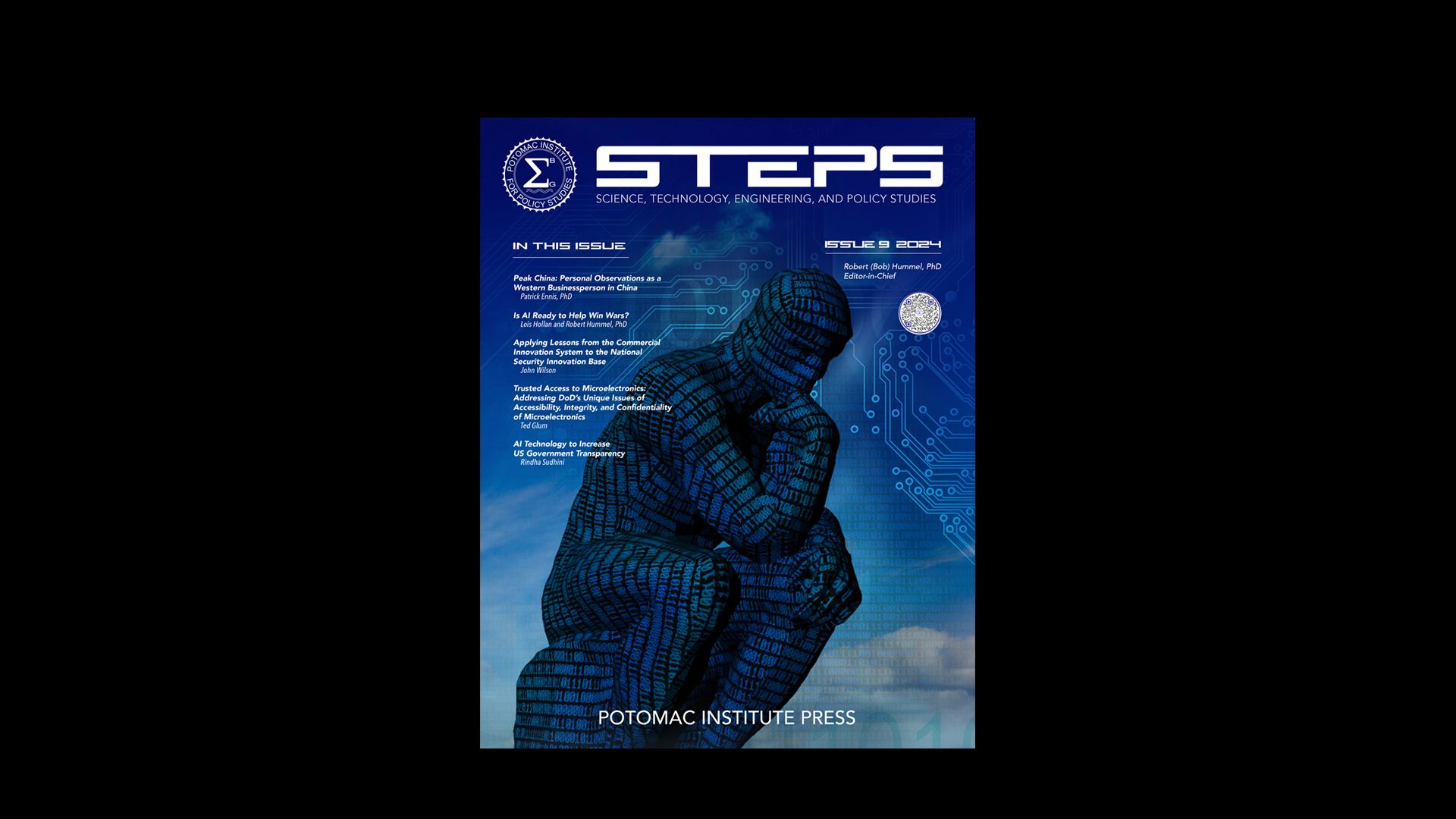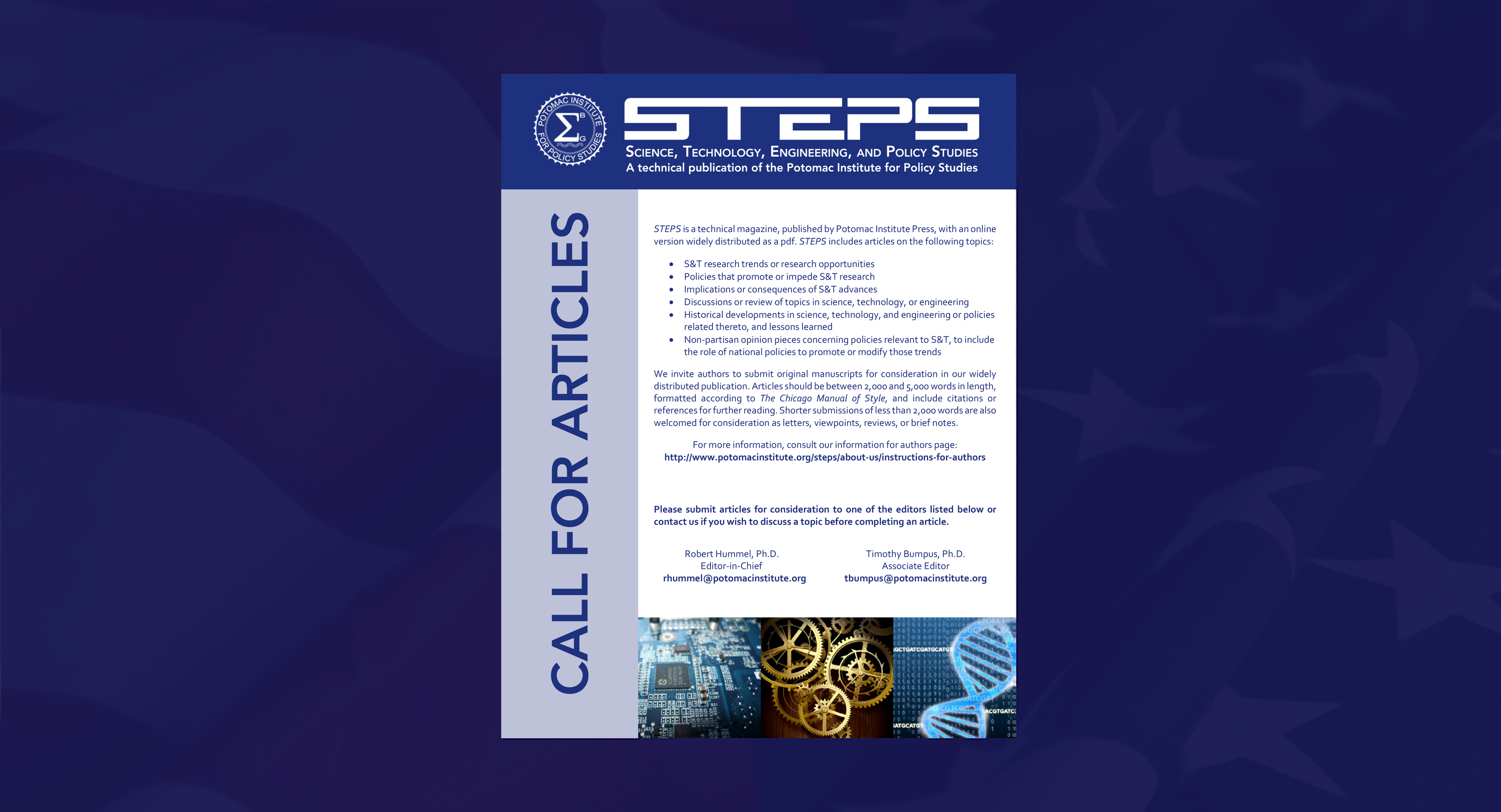Massive Technology Improvements Drive Changes Faster Than Policy Can Keep Up With
Science and technology has been the largest driver in the evolution and change of human affairs, and understanding and assessing new trends in science is the first step helping policymakers react to scientific progress, according to Potomac Institute CEO and Chairman Michael S. Swetnam. He provided the keynote speech to the neuroscience community at a one-day symposium on "Ethical Issues in Neuroscience" in Washington, DC.
Swetnam’s speech, “From Ethics to Policy and Law,” reviewed scientific advancements starting with the Industrial Revolution, showing how technologies have permeated societies around the world, and emphasized that the government needs advice regarding new policy, new legislation, and new investments. The report is available here.
“Today, we continue to see the development of earth shattering, economy changing, and socially disruptive technologies every few years,” Swetnam explained. “These technologies continue to have an increasing impact on society and the cumulative effects are harder to mitigate.”
Four major technologies are causing significant impacts in society now, he said: digital technology, biological technology, nano-technology, and neuroscience and neurotechnology. According to Swetnam, the neurotechnolgoy revolution includes the other ones and will make a larger impact. And this will bring more complicated challenges to governments, because of the potential use for harm, not just good.
“Look at the history of atomic energy technologies. The energy and military applications motivated the development of policy to control the spread of nuclear weapons prior to their widespread use,” Swetnam said. “Without these policies we may have seen nuclear war. The output and future impact of technologies is absolutely critical to contemplate. Policy development requires an established ethical understanding that is turned into legislation that governs, controls, and manages.”
Add to the challenge that the number of laws ratified by Congress has decreased over the last 50 years, which means it’s harder to get regulation, legislation and policy to control technologies and to encourage science to help.
“Policy should be driven and informed by science and technology as well as developed to manage the development of science and technology,” Swetnam stated. And while the government is slowing on policy, scientists are doing more science. “Policy may not be able to catch up nor deal with the impacts of new technological advancements.”
Ensuring that the right organizations, and Congress, have the right advisory boards for science, there should be laws that advocate and fund important scientific research, Swetnam suggested.
“We can encourage, incentivize, and fund neuroscience and technology areas that will clearly benefit society,” Swetnam said. “Rather than debating each of the topics, there are some areas of clear benefit to all of society: enhanced learning, brain repair, artificial limb control, and interfaces for control of muscles with loss of movement. It is important to create the research and investment environment necessary for fast development of useful products.”
Attendees included those who are working in or interested in learning about the intersection of neuroscience with policy, law, ethics, media, and society. Speakers included personnel from government, industry, think tanks, and academia. The symposium addressed the topics of neuroethics in defense, promoting and teaching neuroethics, and transitioning the focus from ethics to policy and law.
Co-sponsored by AAAS and The Potomac Institute for Policy Studies, and hosted by the NeuroPolicy Affinity Group, the day included panel discussions and break out sessions on NeuroEthics in Defense, as well as Promoting and Teaching Standards in NeuroEthics. Video from the event is available here.

















